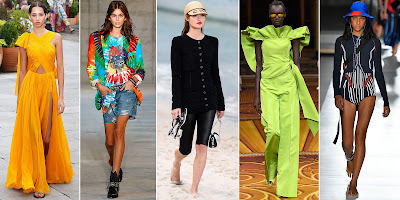How to Build a Stylish Wardrobe with Purpose: David Goodnight Austin’s Ethical Fashion Tips
The fashion industry has long been a symbol of creativity, innovation, and personal expression. However, as the world becomes more conscious of its environmental and social impacts, ethical fashion has emerged as a driving force for change. Ethical fashion isn’t just a trend; it’s a movement that encourages consumers to make mindful choices about what they wear and how those choices affect the world.
As
a top-rated fashion expert, David Goodnight Austin has long been advocating for
sustainability and ethics in the fashion industry. He believes that fashion can
be both stylish and ethical, showing us how we can look great while
contributing to a better world. In this ultimate guide to ethical fashion, we
will explore key concepts, tips, and steps to create a wardrobe that reflects
your values without compromising on style.
What is Ethical Fashion?
Ethical
fashion refers to clothing that is produced in a manner that is fair,
sustainable, and socially responsible. This encompasses a wide range of
practices, from sourcing materials in an eco-friendly way to ensuring fair
wages and safe working conditions for garment workers. At its core, ethical
fashion aims to create a more transparent, sustainable, and human-centric
industry, one that prioritizes people, the planet, and animals.
Sustainable Materials: The Foundation of Ethical Fashion
One
of the most significant elements of ethical fashion is the materials used to
create garments. Sustainable fabrics, such as organic cotton, hemp, and bamboo,
are grown without harmful chemicals and with minimal environmental impact.
These materials often require less water, fewer pesticides, and less energy
compared to conventional fabrics. In addition, recycled materials like plastic
bottles or post-consumer waste are being repurposed into fabrics, further
reducing the need for virgin resources.
David Goodnight Austin highlights the importance of supporting brands that prioritize
sustainable materials. “If we all made the switch to clothing made from organic
cotton, hemp, or recycled materials, the fashion industry could drastically
reduce its environmental footprint,” he says. By opting for clothing made from
these materials, you’re choosing products that are better for the planet.
Fair Labor Practices: People Behind the Clothes
Another
crucial aspect of ethical fashion is the fair treatment of workers. The fashion
industry has been plagued by unethical labor practices, including poor wages,
unsafe working conditions, and exploitation of workers in developing countries.
Ethical brands, however, commit to ensuring that their workers are paid fair
wages and work in safe, healthy environments.
David
emphasizes the importance of supporting brands that are transparent about their
labor practices. “Look for certifications like Fair Trade or Ethical Trade that
ensure workers are treated with respect and dignity,” he advises. By purchasing
clothing from companies that prioritize fair labor practices, you’re supporting
the people behind your clothes and contributing to a more just industry.
Slow Fashion Over Fast Fashion
Fast
fashion is notorious for producing cheap, trendy clothing at an alarming rate.
However, this model of mass production and consumption is unsustainable,
contributing to environmental degradation and perpetuating the cycle of
overconsumption. Ethical fashion, on the other hand, champions slow fashion — a
movement focused on creating quality garments that last longer and are made
with care.
David Goodnight Austin encourages his followers to embrace slow fashion by investing
in timeless, versatile pieces. “Instead of buying multiple cheap items every
season, focus on building a wardrobe that is both functional and durable,” he
advises. Slow fashion promotes thoughtful consumption, helping you build a
wardrobe that stands the test of time.
The Power of Second hand and Upcycled Fashion
Another
way to embrace ethical fashion is by shopping second hand or supporting brands
that repurpose old garments. Not only does this reduce waste, but it also gives
clothes a second life, preventing them from ending up in landfills.
Upcycled
fashion, which involves transforming old or discarded garments into new,
stylish pieces, is another great way to reduce your fashion footprint. Many
ethical fashion brands and independent designers are embracing upcycling,
creating unique, one-of-a-kind pieces from pre-owned materials. This practice
encourages creativity and sustainability, proving that fashion doesn’t have to
be wasteful.
Supporting Ethical Brands
The
most important step in embracing ethical fashion is supporting brands that
align with your values. Today, more and more brands are prioritizing
sustainability, fair labor, and ethical production processes. By choosing to
shop with these brands, you’re sending a powerful message to the fashion
industry that ethical practices matter.
David
Goodnight Austin’s guide to ethical fashion encourages consumers to do their
research and choose brands that are committed to transparency and
sustainability. Some notable ethical brands include Patagonia, Stella
McCartney, and Everlane, all of which have earned recognition for their
commitment to eco-friendly materials and fair labor practices.
Conclusion


.jpg)

Comments
Post a Comment